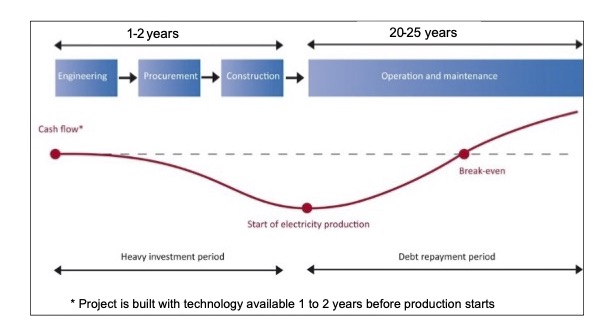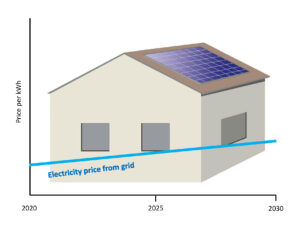In situations where the price charged per kWh of electricity is lower if monthly electricity consumption remains below a certain, having a grid-connected PV system can ensure consumption from the grid remains below this level.

Electricity purchased from the grid remains in the lower tariff band through the month. The PV system produces enough electricity to ensure that this is the case, even when overall electricity consumption is higher. The size of the PV system will depend on the load profile, solar irradiation and tariff arrangements. A net-metering arrangement would normally be used.
Utility tariff structures can be complex. For example, it may be the case that if monthly electricity consumed is above a certain level, then the higher tariff will be charged for all the electricity consumed or alternately, only for electricity consumed above that level. The price of electricity per kWh could also differ at different times during the day. Therefore, a clear understanding of utility tariff arrangements is required so that the solar system delivers optimum cost-saving and does not produce more electricity that is required.
Daytime electricity can also be reduced by the use of low-energy and energy-efficient electrical appliances, and replacing electric water heating with a solar water heating system.











